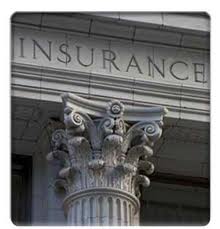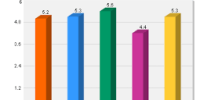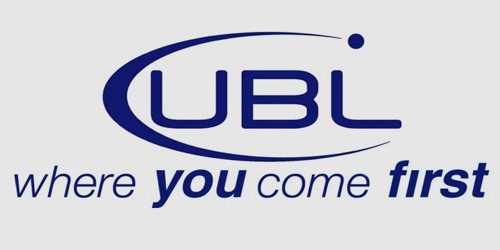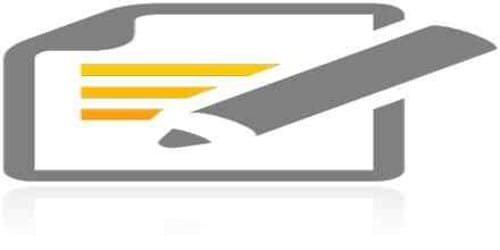Executive Summary:
IFRS sets the base of the financial corporation. To this section we have pay much attention on the insurance sector. To analyze all of the section of insurance then we find that all insurance companies are not follow the same rules regarding IFRS. Only some sort of Banking sector have to follow the IFRS. All insurance companies follow the IAS standard.
The purpose of the report is to identify the financial condition and implementation of various IFRS system and practices in insurance companies.
Insurance sector plays a pivotal role in the economic development of the country. By providing rich IFRS practices and offering of competitive benefit package,insurance companies in ensuring a working environment where management and employees put combined effort towards the growth of the company and accepts new challenges in a diversified environment. Acknowledgment of success is ensured here to motivate our staff.
Finally recommendation was provided to make the IFRS system more effective and efficient for the organization. If insurance companies follow the IFRS system thoroughly then it will be always in upper hand to retained best employees in the organization in the future.
International Financial Reporting Standards:
Since 2001, the new set of standards has been known as the international financial reporting standards (IFRS) and has been issued by the International Accounting Standards Board (IASB). Financial statements may not be described as complying with IFRSs unless they comply with all of the requirements of each applicable standard and each applicable interpretation.
International Financial Reporting Standards (IFRS) are Standards, Interpretations and the Framework for the Preparation and Presentation of Financial Statements (in the absence of a Standard or an Interpretation) adopted by the International Accounting Standards Board (IASB).
Many of the standards forming part of IFRS are known by the older name of International Accounting Standards (IAS). IAS were issued between 1973 and 2001 by the Board of the International Accounting Standards Committee (IASC). On 1 April 2001, the new IASB took over from the IASC the responsibility for setting International Accounting Standards. During its first meeting the new Board adopted existing IAS and SICs. The IASB has continued to develop standards calling the new standards IFRS.
- IFRS 1 First-time Adoption of International Financial Reporting Standards
- IFRS 2 Share-based Payment
- IFRS 3 Business Combinations
- IFRS 4 Insurance Contracts
- IFRS 5 Non-current Assets Held for Sale and Discontinued Operations
- IFRS 6 Exploration for and Evaluation of Mineral Assets
- IFRS 7 Financial Instruments: Disclosures
- IFRS 8 Operating Segments
The transition around the world to International Financial Reporting Standards (IFRS) – which were formerly known as International Accounting Standards (IAS) – is the most important development ever seen in the world of accounting.
The European Commission has made IFRS (a single set of high quality, understandable and enforceable global accounting standards) mandatory for all 7000 EU public companies (including some 2000 in the UK alone) as from financial year 2005.
Outside of the EU, significant regions such as Australia, Russia, South America, Africa and the Middle East either have adopted or are currently in the process of adopting IFRS, with others including the USA, Canada, China and Japan being already committed to a path of future convergence.
IAS seminars is proud to offer a broader and deeper range of IFRS courses in more worldwide locations than any other training organization.
IFRSs in Bangladesh
The South Asian Federation of Accountants sponsored the First South Asian Accounting Summit on 18-19 April 2006 in Karachi, Pakistan. Representatives of the Institute of Chartered Accountants of Bangladesh (ICAB) presented an update on the adoption of IFRSs in Bangladesh:
Legal Framework
The Companies Act of 1994 provides basic requirements for financial reporting by all companies in Bangladesh. It is silent about either Bangladesh Accounting Standards (BASs) or International Accounting Standards (IASs/IFRSs).
Listed companies. The Securities and Exchange Commission of Bangladesh regulates financial reporting by listed companies. SER 1987 requires compliance with IASs/IFRSs as adopted in Bangladesh (these are known as Bangladesh Accounting Standards, or BASs).
Insurances. The Insurance Company Act mandates reporting formats and disclosures based on BAS 30, which is similar to IAS 30. The Act is silent about other BAS, and compliance with BASs by insurances is mixed.
Insurance companies. The Insurance Act does not mandate compliance with BASs. In practice, insurance companies often do not follow BASs.
Other companies. Neither the law nor the by-laws of the Institute of Chartered Accountants of Bangladesh mandates compliance with BASs by unlisted companies. Actual compliance varies widely. There are no separate standards for small and medium-sized entities (SMEs).
Status of Adoption of IFRSs in Bangladesh:
IFRS No. | IFRS Title | Date of Pronouncement | Effective Date as IFRS | Status of Adoption by ICAB | Effective Date as BAS |
IFRS 1 | First-time Adoption of International financial Reporting Standards | June 2003 | 01 January 2004 | Under review by ICAB | — |
IFRS 2 | Share Based Payment | February 2004 | 01 January 2005 | 05 July 2006 | 01 January 2007 |
IFRS 3 | Business Combinations | October 1998 | 31 March 2004 | 15 December 2005 | 01 January 2007 |
IFRS 4 | Insurance Contracts | March 2004 | 01 January 2005 | Under review by ICAB | — |
IFRS 5 | Non-Current Assets held for Sale and Discontinued Operations | June 1998 | 01 January 2005 | 15 December 2005 | 01 January 2007 |
IFRS 6 | Exploration for and Evaluation of Mineral Resources | December 2004 | 01 January 2006 | 05 July 2006 | 01 January 2007 |
IFRS 7 | Financial Instruments: Disclosures | August 1990 | 01 January 2006 | Not yet Adopted | — |
IFRS 8 | Operating Segments | November 2006 | 01 January 2009 | Not yet Adopted | — |
IAS
List of International Accounting Standards
IAS NO. | IAS-NAME |
IAS 1 | Presentation of Financial Statements |
IAS 2 | Inventories |
IAS 3 | Consolidated Financial Statements – Originally issued 1976, effective 1 Jan 1977. Superseded in 1989 by IAS 27 and IAS 28 |
IAS 4 | Depreciation Accounting – Withdrawn in 1999, replaced by IAS 16, 22, and 38, all of which were issued or revised in 1998. |
IAS 5 | Information to Be Disclosed in Financial Statements – Originally issued October |
IAS 6 | Accounting Responses to Changing Prices – Superseded by IAS 15, which was withdrawn December 2003 |
IAS 7 | Statement of Cash Flows |
IAS 8 | Accounting Policies, Changes in Accounting |
IAS 9 | Accounting for Research and Development Activities – Superseded by IAS 38 effective 1.7.99 |
IAS 10 | Events After the Reporting Period |
IAS 11 | Construction Contracts |
IAS 12 | Income Taxes |
IAS 13 | Presentations of Current Assets and Current Liabilities – Superseded by IAS 1. |
IAS 14 | Segment Reporting |
IAS 15 | Information Reflecting the Effects of Changing Prices – Withdrawn December 2003 |
IAS 16 | Property, Plant and Equipment |
IAS 17 | Leases |
IAS 18 | Revenue |
IAS 19 | Employee Benefits |
IAS 20 | Accounting for Government Grants and Disclosure of Government Assistance |
IAS 21 | the Effects of Changes in Foreign Exchange Rates |
IAS 22 | Business Combinations – Superseded by IFRS 3 effective 31 March 2004 |
IAS 23 | Borrowing Costs |
IAS 24 | Related Party Disclosures |
IAS 25 | Accounting for Investments – Superseded by IAS 39 and IAS 40 effective 2001 |
IAS 26 | Accounting and Reporting by Retirement Benefit Plans |
IAS 27 | Consolidated and Separate Financial Statements |
IAS 28 | Investments in Associates |
IAS 29 | Financial Reporting in Hyperinflationary Economies |
IAS 30 | Disclosures in the Financial Statements of Insurances and Similar Financial Institutions – Superseded by IFRS 7 effective 2007 |
IAS 31 | Interests in Joint Ventures |
IAS 32 | Financial Instruments: Presentation – Disclosure provisions superseded by IFRS 7 effective 2007 |
IAS 33 | Earnings per Share |
IAS 34 | Interim Financial Reporting |
IAS 35 | Discontinuing Operations – Superseded by IFRS 5 effective 2005 |
IAS 36 | Impairment of Assets |
IAS 37 | Provisions, Contingent Liabilities and Contingent Assets |
IAS 38 | Intangible Assets |
IAS 39 | Financial Instruments: Recognition and Measurement |
IAS 40 | Investment Property |
IAS 41 | Agriculture |
Implementation of IAS in Bangladesh
IAS Title | Date of Pronouncement | Effective Date as IAS | Status of Adoption by ICAB | Effective Date as BAS | |
23 | Borrowing Costs | December 1993 (Amended) | 01 January 1995 | Originally adopted on 1 January 1990. | 05 July 2006 |
Introduction:
A set of international accounting and reporting standards that will help to harmonize company financial information, improve the transparency of accounting, and ensure that investors receive more accurate and consistent reports. Statements of International Accounting Standards issued by the Board of the International Accounting Standards Committee (IASC) between 1973 and 2001 are designated International Accounting Standards.
International Accounting Standards (IASs) were issued by the IASC from 1973 to 2000. The IASB replaced the IASC in 2001. Since then, the IASB has amended some IASs and has proposed to amend others, has replaced some IASs with new International Financial Reporting Standards (IFRSs), and has adopted or proposed certain new IFRSs on topics for which there was no previous IAS. Through committees, both the IASC and the IASB also have issued Interpretations of Standards.
The Companies Act 1994, which replaced the Companies Act 1913, provides the requirements for preparation and publication of financial statements, disclosures, among other provisions. However, in most cases, the Act lacks clarity with regard to statutory requirements on disclosures in the financial statements of the incorporated companies. The formats for presentation of financial statements and requirements on disclosures prescribed in the Act need updating or removing. Moreover, some accounting requirements prescribed by the Act are incompatible with International Accounting Standards (IAS).For example, contrary to IAS, the Companies Act requires capitalization of gains and losses arising from changes in foreign exchange rates under all circumstances. Inconsistencies between IAS and the Companies Act need to be eliminated. The committee, which has been formed by the Government for updating the Companies Act, should take it into consideration.
Accounting requirements set by the Insurance Companies Act 1991 are in addition to the requirements set by Companies Act 1994. The Insurance Companies Act prescribes the format of balance sheet and income statement, including disclosure requirements that each insurance must follow for regulatory reporting to the Insuranceing Inspection Department of the Bangladesh Insurance. The same accounting and financial reporting rules are required to be followed by insurances in preparing financial statements for external users. The Insurance Companies Act empowered the Bangladesh Insurance to approve appointment of insurance auditors. In practice, the Bangladesh Insurance maintains a list of approved auditors. The list contains both large and small audit firms.
International Accounting Standards (IASs) were issued by the IASC from 1973 to 2000. The IASB replaced the IASC in 2001. Since then, the IASB has amended some IASs and has proposed to amend others, has replaced some IASs with new International Financial Reporting Standards (IFRSs), and has adopted or proposed certain new IFRSs on topics for which there was no previous IAS. Through committees, both the IASC and the IASB also have issued Interpretations of Standards.
Acountants, ICAB regulates its members; however, it has no legal mandate for setting accounting standards. Despite that, ICAB develops and issues BAS, which are not legally binding by corporate management. The ICAB expects its members, who prepare and audit financial statements, to observe the local standards. The ICAB has a standard-setting committee that selects particular IAS as the basis for drafting BAS. The BAS is prepared by adapting IAS to reflect specific local requirements under Bangladesh laws and regulations. The draft BAS is submitted to the Council of the ICAB for discussion, finalization, and adoption.
Insurance sector in Bangladesh:
There are various insurance companies are existing in our Bangladesh. Some companies are as follows:
AGRANINS( Agrani Insurance Co. Ltd. ) |
GLOBALINS( Global Insurance Ltd. ) |
POPULARLIF( Popular Life Insurance Co. Ltd. ) |
FAREASTLIF( Fareast Islami Life Insurance Co. Ltd. ) |
MEGHNALIFE( Meghna Life Insurance Co. Ltd. ) |
NITOLINS( Nitol Insurance Co. Ltd. ) |
PROGRESLIF( Progressive Life Insurance Co. Ltd. ) |
ASIAPACINS( Asia Pacific General Insurance Co. Ltd. ) |
SONARBAINS( Sonar Bangla Insurance Ltd. ) |
PRAGATILIF( Pragati Life Insurance Ltd. ) |
PRIMELIFE( Prime Islami Life Insurance Ltd. ) |
PARAMOUNT( Paramount Insurance Company Ltd. ) |
CITYGENINS( City General Insurance Co. Ltd. ) |
CONTININS( Continental Insurance Ltd. ) |
TAKAFULINS( Takaful Islami Insurance Limited ) |
STANDARINS( Standard Insurance Limited ) |
NORTHRNINS (Northern General Insurance Company Ltd. ) |
REPUBLIC( Republic Insurance Company Limited ) |
ASIAINS( Asia Insurance Limited ) |
RUPALILIFE( Rupali Life Insurance Company Limited ) |
Financial footing with an Authorized Capital BD Tk. 300 million out of which sponsor Directors paid up capital of BD Tk. 60 million. We have already been taken steps to float public share of BD Tk. 90 million. The main features of the Company is stated as below-
- The Company is equipped with a team of highly qualified young and experienced management personnel headed by professionally qualified Managing Director Mr. Md. Ezhar Hossain ABIA.
- Within the frame work of existing tariff, this Company charges the most economic and competitive premium rate ensuring maximum security at minimum cost.• The Company has got necessary Re-insurance arrangement under which it can underwrite any risk of any value.
- This Company takes utmost care in handling and settling claims with due promptitude with a view to giving timely indemnity to the unfortunate members of the clientele.
Asia Insurance Limited is a leading general insurance company in private sector with a sound and strong
The sponsor Directors of the Company are renowned business magnets and reputed Industrialists in the Country. Mr. Yussuf Abdullah Harun FCA, former President of the FBCCI is leading the Company as Chairman of the Board.
| Company Profile : | ||||||||||||||||||||||||||||||||||||
| ASIA INSURANCE | ||||||||||||||||||||||||||||||||||||
| ||||||||||||||||||||||||||||||||||||
| (Tk. in Million) | ||||||
Particulars | 31-12-2003 | 31-12-2004 | 31-12-2005 | 31-12-2006 | 31-12-2007 | 31-05-2008 for 5 months |
| Net Premium | 30.63 | 44.18 | 68.31 | 81.15 | 124.72 | 71.66 |
| Growth | 44.24% | 54.62% | 18.80% | 53.69% | ||
| Net Claims | (0.55) | 7.73 | 13.18 | 11.80 | 36.25 | 23.45 |
| Growth | 70.50% | -10.47% | 207.20% | |||
| Management Expenses | 32.78 | 33.28 | 36.75 | 48.58 | 49.43 | 21.20 |
| Growth | 1.53% | 10.43% | 32.19% | 1.75% | ||
| Profit Before Taxes | 15.84 | 17.15 | 20.35 | 22.65 | 32.10 | 50.55 |
| Growth | 8.27% | 18.66% | 11.30% | 41.72% | ||
| Profit After Taxes | 10.87 | 12.13 | 15.19 | 16.11 | 23.27 | 31.30 |
| Growth | 11.59% | 25.23% | 6.06% | 44.44% | ||
| Earnings per Share | 18.12 | 20.22 | 25.32 | 26.85 | 38.78 | 52.17 |
| Growth | 11.59% | 25.23% | 6.06% | 44.44% | ||
| Total Assets | 239.01 | 322.16 | 365.30 | 385.35 | 431.02 | 466.05 |
| Growth | 34.79% | 13.39% | 5.49% | 11.85% | ||
| Total Liabilities | 162.02 | 240.14 | 275.04 | 285.67 | 317.07 | 320.80 |
| Growth | 48.22% | 14.53% | 3.86% | 10.99% | ||
| Net Asset Value | 76.99 | 82.02 | 90.26 | 99.68 | 113.95 | 145.25 |
| Growth | 6.53% | 10.05% | 10.44% | 14.32% | 27.47% | |
| Total Reserves* | 29.42 | 39.90 | 57.75 | 72.20 | 103.90 | 113.92 |
| Growth | 35.62% | 44.74% | 25.02% | 43.91% | ||
| Net Asset Value per Share | 128.32 | 136.70 | 150.43 | 166.13 | 189.92 | 242.08 |
| Growth | 6.53% | 10.05% | 10.44% | 14.32% | 27.47% | |
| Determination of Net Asset Value | ||||||
Particulars | 31-12-2003 | 31-12-2004 | 31-12-2005 | 31-12-2006 | 31-12-2007 | 31-05-2008 for 5 months |
| Total Assets | 239.01 | 322.16 | 365.30 | 385.35 | 431.02 | 466.05 |
| Total Liabilities | 162.02 | 240.14 | 275.04 | 285.67 | 317.07 | 320.80 |
| Net Assets | 76.99 | 82.02 | 90.26 | 99.68 | 113.95 | 145.25 |
| No. of Shares | 600000 | 600000 | 600000 | 600000 | 600000 | 600000 |
| Net Assets Value per Share | 128.32 | 136.70 | 150.43 | 166.13 | 189.92 | 242.08 |
Federal Insurance
Company Profile
Federal Insurance Company Limited is a name in the field of Insurance Industry in Bangladesh representing a perfect combination of expert knowledge and diverse experience. The board of directors of the company consists of leading industrialists, exporters, importers and businessmen of the country who play a major role in the sphere of trade, commerce and industry including insurance business. The company was registered on the 11th November, 1987 and obtained Insurance Registration Certificate on the 17th November and was formally inaugurated on the 20th December, 1987 for underwriting Marine, Fire, Motor, Personal Accident, Aviation and miscellaneous Insurances.
The vast experience of the members of the Board of Directors of the Company, their financial standing, personal image and social status coupled with technically qualified, highly experienced and a dedicated management team have made this Company one of the leading private general insurance organizations in this country within a very short period.
CAPITAL STRUCTURE OF THE COMPANY
Authorized Capital : TK. 2,00,00,000 /=
Issued, Subscribed
and Paid Up Capital : Tk. 9,10,69,400 /=
Balance Sheet
As on 31st December’ 2008
| BALANCE SHEET | Amount in BDT | |||||||||||
As at 31st December, 2008 | ||||||||||||
| CAPITAL & LIABILITES | 2008 | 2007 | PROPERTY & ASSETS | 2008 | 2007 | |||||||
Taka | Taka | Taka | Taka | |||||||||
| SHAREHOLDERS’EQUITY: | 142,215,609 | 133,016,823 | INVESTMENT (AT COST) | 6,560,601 | 6,414,601 | |||||||
| Share Capital | 91,069,400 | 81,312,000 | ||||||||||
| Statutory Deposit with Bangladesh Bank | ||||||||||||
| Proposed Issue of Bonus Share | 9,106,900 | 9,757,440 | in the form of 3 (three) year National Investment Bond | 4,500,000 | 4,500,000 | |||||||
| Reserve for Exceptional Losses | 35,674,368 | 35,174,368 | Shares | 2,060,601 | 1,914,601 | |||||||
| Revaluation reserve | 6,282,495 | 6,282,495 | ||||||||||
| Retained Earning – as per Profit and Loss | ||||||||||||
| Appropriation Account | 82,446 | 490,520 | OUTSTANDING PREMIUM | 60,441,984 | 57,289,087 | |||||||
| BALANCE OF FUNDS | 54,985,907 | 51,680,714 | INTEREST, DIVIDEND & RENT ACCRUING | |||||||||
| BUT NOT DUE | 2,906,441 | 2,867,242 | ||||||||||
| Fire Insurance Business | 14,839,843 | 14,545,586 | ||||||||||
| Marine Cargo Insurance Business | 20,625,817 | 20,060,118 | AMOUNT DUE FROM OTHER PERSONS | |||||||||
| Marine Hull Insurance Business | 622,021 | 378,943 | OR BODIES CARRYING ON INSURANCE | |||||||||
| Motor Insurance Business | 16,896,278 | 14,736,952 | BUSINEES | 81,001,983 | 78,321,424 | |||||||
| Miscellaneous Insurance Business | 2,001,948 | 1,959,115 | ||||||||||
| ESTIMATED LIABILITIES IN RESPECT OF | SUNDRY DEBTORS | 255,001,348 | 247,560,802 | |||||||||
| OUTSTANDING CLAIMS WHETHER DUE | ||||||||||||
| OR INTIMATED | 26,090,287 | 27,496,035 | CASH AND BANK BALANCES | 111,161,043 | 95,114,324 | |||||||
| AMOUNT DUE TO OTHER PERSONS OR | OTHER ACCOUNTS | 43,026,543 | 41,918,133 | |||||||||
| BODIES CARRYING ONINSURANCE | ||||||||||||
| BUSINESS | 204,705,022 | 176,506,498 | Fixed Assets less Depreciation | 41,663,413 | 40,670,950 | |||||||
|
| ||||||||||||
| Library Account | 181,030 | 181,030 | ||||||||||
| SUNDRY CREDITORS | 107,615,249 | 111,231,351 | Stock of Stationery | 1,182,100 | 1,066,153 | |||||||
| LOANS AND ADVANCES | 21,601,474 | 17,130,211 | ||||||||||
| OTHER SUMS OWING | ||||||||||||
| Premium Deposit Account | 2,886,395 | 12,424,017 | ||||||||||
560,099,943 | 529,485,613 | 560,099,943 | 529,485,613 | |||||||||
PRAGATI INSURANCE LIMITED
It was established in 1986. A group of young entrepreneurs of Bangladesh who had earlier launched a commercial Bank in the private sector sponsored the company with 30 million Taka capital. Sponsors included shipping magnets, Engineers, Road Builders, Top Garment Exporters and Importers.
Market size of Bangladesh in the non-life sector was Tk. 1,050 million in 1986. It has grown to Tk. 5,967.119 million in 2006. With the arrival of private sector power companies like AES, gas giants like UNOCAL, SHELL and discovery of new off shore gas in the Bay of Bengal and other private sector infrastructure industry in the country, it is expected that there would be quantum jump in the non-life insurance premium portfolio in Bangladesh once the decision as to utilization or export of gas is taken by the Govt.
Besides, we insure all traditional lines of non-life insurance businesses viz. – Fire & allied risks including flood, cyclone, earthquake, Typhoon, malicious damage, burglary, riot, strike, damage, house breaking, industrial all risks, DOS, machinery break-down, loss of profit, business interruption, CAR/EAR, personal accident including workmen compensation, motor insurance of all descriptions & value, Travel medical & medical insurance.
Paid-up capital of the company is Tk.188.83 million and Reserves including capital reserves stood at Tk.784.92 million thus making an equity base of Tk.780.51 million as of December 2006.
Total Asset as of 31st December, 2005 stood at over Tk.1,404.54 million.
Investment Company’s investment portfolio is well balanced. Position in brief, as of December, 2003, stood as below:
Amount (Tk.) | |
| Govt. Bond | Tk.4,500,000 |
| Shares & Debentures (Revalued as per IAS-25 ) | Tk.215,725,829 |
| Land (Freehold) | Tk. 356,626,207 |
| Land & Building | Tk. 175,294,893 |
| Total | Tk. 752,146,929 |
Claim Settlement: Client’s service and prompt settlement of claims are the key to the success and growth of the company. Claims are settled immediately on completion of the required formalities by the insured and the surveyors. The company has settled claims of over Tk. 1,764.40 million since it started operation in 1986 till 2005. The gross premium earned and gross claims settled during the last 5(five) years stood as under:
(Taka In Million)
2002 | 2003 | 2004 | 2005 | 2006 | |
| Gross Premium earned | 350.39 | 468.74 | 507.70 | 632.07 | 695.43 |
| Gross claim settled | 126.64 | 254.79 | 126.38 | 183.22 | 314.39 |
Re-Insurance arrangement: Company’ portfolio is adequately reinsured both at home and abroad. Fire and allied risks are covered by surplus and Auto-Fac Treaties. Marine Cargo risks are also covered by surplus & Auto-Fac Treaties. Motor risks are covered by 3 layer XL Treaties. Engineering and Misc. risks are covered by Surplus Treaty. The company has also cover for fire and marine cargo own retained portfolio. Company’s gross premium income, Reinsurance cession and net premium retention for the year 2005 were as under (Taka in Million):
Fire | Marine | Motor & Misc | Total |
| Gross premium | 258 | 277 | 160 | 695 |
| Reinsurance Cessions | 198.93 | 132.89 | 25.28 | 357.10 |
| Retained premium | 45.04 | 136.20 | 93.75 | 274.99 |
Performence at a glance
Taka in Million
FINANCIAL PERFORMANCE
| |||||||||||||||||||||||||||||||||||||||||||||||||||||||||||||||||||||||||||||||||||||||||||||||||||||||||||||||||||||||||||||||||||||||||||||||||||||||||||||||||||||||||||||||||||||||||||||||||||||||||||||||||||||||||||||||||||||||||||||||||||||||||||||||||||||||||||||||||||||||||||||||||
Other Activities
Financial Operation
Pragati has been in financial sector operation like share underwriting, trusteeship to the debenture issues, trading of shares and other securities at both primary and secondary market.
Pragati-RPR Centre
Pragati has built a 16 storied high rise building at Kawran Bazar, Dhaka -1215 under a joint venture programme with Rhone Poulenc Rorer (RPR) Bangladesh Ltd which has completely changed the sky line of the area. Out of 16, 4 floors (2nd to 5th) belong to RPR and rest 12 floors belong to Pragati. The Head Office of the company is situated at the 12th, 13th & 14th floors.
Land Development
Pragati has a big chunk of land measuring 86 kathas in the prime location of Dhaka. The land is situated on the corner of Panthapath and Sonargaon Road crossing opposite Sonargaon Hotel. Various alternatives are being examined by the company for proper utilization of the land.
Rupali Insurance Ltd
Under the prudent leadership and unstinted support from the Board of Directors Rupali Insurance Company diversified it’s activities to include a wide range of Insurance Services with a net work of 42 branches in Bangladesh. It is a matter of pride that a man of great personality, well-reputed industrialist and Ex-President of Bangladesh Garment Manufacturers and Exporters Association (BGMEA) Mr. Mostafa Golam Quddus is the Chairman of the Board of Directors of the Company.
It is also worth mentioning that the Ex-President of Bangladesh Garment Manufacturers and Exporters Association (BGMEA) Mr. Kazi Maniruzzaman a leading industrialist and a man of reputation is one of the Directors of the Company.
We have the pleasure to add that Mr. M. Azizul Huq Former Inspector General of Police, Government of the People’s Republic of Bangladesh & Former Advisor to the Caretaker Government of Bangladesh joined the Company as Management and Financial Consultant in 1998 after retirement.
The Company is managed by a team of highly qualified and experienced professionals headed by the Managing Director Mr. P. K. Roy, FCA, FCS having vast expertise and experience in the field of Insurance, Re-insurance and Financial Management to his credit.
Paid up Capital:
The Company started its functioning with Paid up Capital of Tk.30.00 million as subscribed by the sponsor shareholders and it has gone into public subscription in 1995 for share of Tk.30.00 million at 50% premium. The paid-up capital of the company is now 60.00 million. Tabulation of capital structures of our Company is shown as under:-
Capital Structure
[ Taka in million ] | |||||
| Authorized Capital | 200.00 | ||||
| Paid-up Capital : |
| ||||
| Paid-up Capital | 114.26 | ||||
Reserve:
Reserve for Exceptional Losses in 2008 stood at Tk. 169 million including Tk. 8 million raised during the year out of net profit. Besides, Reserve for Unexpired Risks stood at Tk. 122 million. It may be mentioned here that the reserve for Exceptional Losses is higher than the Paid-up-Capital of Tk. 114 million.
Assets:
- Total assets of the company stood at Tk. 615 million in 2008 compared to Tk. 559 million in 2007. This includes the book value of the 12 storied building of the Company at Tk. 101 million, the present market value of which is much higher. Six floors measuring 13,512 sft. of the building have been leased out to different parties including 1 life Insurance Companies.
ACHIEVEMENT:The achievement of year wise premium income of our company is shown below: |
Underwriting profit in the year 2008 amounted to Tk. 43 million compared to Tk. 29 Million in 2007. Net profit before tax stood at Tk. 53 million as against Tk. 37 million in 2007.
Rupali Insurance Ltd. Balance Sheet | |||||||||
As on 31st December, 2008 | |||||||||
| CAPITAL AND LIABILITIES | NOTE | 2008 | 2007 | PROPERTY AND ASSETS | NOTE | 2008 | 2007 | ||
| Authorized Capital: | 200,000,000 | 200,000,000 | Investment (At cost): | 1 | 29,567,290 | 19,660,987 | |||
| 20,00,000 ordinary shares of Taka 100 each | ========= | ========= | |||||||
| Issued subscribed & paid up capital: | 7 | 114,264,000 | 95,220,000 | Outstanding premium | 2 | 37,612,609 | 20,660,293 | ||
| 1,142,640 Ordinary Shares of Taka100 each | |||||||||
| Share Premium | 8 | 15,000,000 | 15,000,000 | Accrued interest | 3 | 9,477,794 | 8,420,290 | ||
| Reserve, Surplus & Contingency accounts: | Amount due from other persons or | 4 | 8,865,071 | 7,878,705 | |||||
| Reserve for exceptional losses | 9 | 168,873,550 | 160,873,550 | bodies carrying on Insurance Business | |||||
| Profit & loss Appropriation Accounts | 24,925,179 | 19,903,412 | Sundry debtors (including deposits and prepayments) | 5 | 82,630,376 | 111,448,491 | |||
| Balance of funds and Accounts: | Cash and Bank Balances | 6 | 257,059,740 | 218,908,498 | |||||
| Fire Insurance Business | 26,277,806 | 26,592,858 | |||||||
| Marine Insurance Business | 45,533,620 | 38,976,788 | |||||||
| Miscellaneous Insurance Business | 50,044,712 | 42,561,608 | |||||||
121,876,138 | 108,131,254 | Others Accounts : | |||||||
| Premium Deposit | 10 | 9,252,477 | 11,581,935 | Fixed assets at cost less depreciation(Annesure-1) | 104,385,468 | 98,192,642 | |||
| Stock of printing materials (At cost) Advance income tax [(Note-13(I)] | 784,748 | 866,762 | |||||||
85,110,110 | 73,328,177 | ||||||||
|
| ||||||||
190,280,326 | 172,387,581 | ||||||||
| Estimated Liabilities in respect of outstanding claims whether due or intimated | 11 | 31,510,103 | 30,323,071 | ||||||
| Amount due to other persons or bodies | 12 | 30,680,409 | 36,871,681 | ||||||
| carrying on insurance Business | |||||||||
| Sundry creditors (including provision for expenses and taxes ) | 13 | 99,111,350 | 81,459,942 | ||||||
Taka | 615,493,206 | 559,364,845 | Taka | 615,493,206 | 559,364,845 | ||||
IFRS AND IAS followed by Bangladeshi Insurance companies:
Neither insurance company in Bangladesh follow IFRS strictly. But companies follow IAS to some extent.
Here we give some IAS which are followed by the insurance companies in different fashion.
Recommendation:
In Bangladesh the insurance companies do not follow the IFRS rules only some of the leading banks follow the IFRS rules. The insurance companies clearly follow the relative act of IAS. So it is mandatory for these companies to follow IFRS rules clearly to provide related parties adequate information.
Steps should be taken to ensure that the legal and regulatory requirements on accounting and financial reporting fully protect the public interest. This recommendation might necessitate the enactment of a new Financial Reporting Act and the repeal of the provisions on accounting and financial reporting in Companies Act 1994, Insurance Companies And other related regulations. It will be easy to update accounting and financial reporting requirements from time to time by simply amending the single Financial Reporting Act. The new Act should focus on making legal arrangements for the following:
Fully adopt IAS/IFRS and ISA (International Standard of Auditing) without modifications and ensure mandatory observance of these standards. Adopt IAS/IFRS and related interpretations issued by the IASB as legally enforceable standards applicable to the preparation of the legal entity and consolidated financial statements of all public interest entities.The audit of financial statements prepared by public interest entities should be carried out in accordance with ISA (International Standard of Auditing) and other related pronouncements issued by IFAC. Also mandate the IFAC Code of Ethics for Professional Accountants for all practicing accountants and auditors.
Conclusion:
International Accounting Standards (IASs) were issued by the IASC from 1973 to 2000. The IASB replaced the IASC in 2001. Since then, the IASB has amended some IASs and has proposed to amend others, has replaced some IASs with new International Financial Reporting Standards (IFRSs), and has adopted or proposed certain new IFRSs on topics for which there was no previous IAS. Through committees, both the IASC and the IASB also have issued Interpretations of Standards.
The ICMAB can play a vital role in the implementation of IAS since it provides training to existing and potential corporate accountants. To ensure IAS compliance when preparing corporate financial statements, corporate accountants should have access to effective and high-quality training programs. ICMAB capacity should be strengthened to provide effective training on practical application of IAS.
















